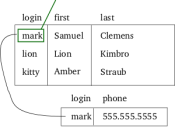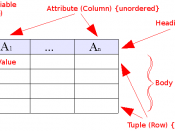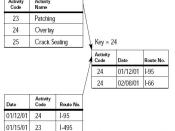Creating a database logical design is one of the first important steps in designing a database. There are four logical database models that can be used hierarchical, network, relational, or object-oriented.
1.Hierarchical:
The first important logical database model. Still found in many mainframe-based, legacy systems. Records are arranged in a top-down parent/child structure. Each child can be related to only one parent
2.Network
Developed to overcome the limited scope of the hierarchical model. Similar to the hierarchical model only there's no parent/child distinction. Any record type may be associated with any number of different record types.
3.Relational
Data are represented in the form of tables with rows and columns. Attributes are listed in columns, entity instances are represented by a row entry.
4.Object-Oriented
Data attributes and operations on the attributes are encapsulated within objects. Objects can inherit properties, can be generalized to form new objects, and are reusable.
The O-O model is a fairly new way of looking at things.
For this paper we will be using the relational model. With that decided, we can start on the three steps in logical design:
1.Construct an E-R diagram to a set of relations (two-dimensional tables)
2.Represent each entity type as a relation.
3.Represent each relationship via primary and foreign keys. This can be done by following a couple of easy rules:
÷Normalize the relations to ensure a well-conditioned model
÷Merge the relations to eliminate redundancies
First introduced in 1970 by E. F. Codd the relational database model represents data in the form of tables (or relations). Mathematically based yet relatively straightforward and easy to understand. Consists of three components:
1.Data Structure (via tables)
2.Data Manipulation (via SQL, for example)
3.Data Integrity (via formal business rules)
Relations
A relation is a named,


